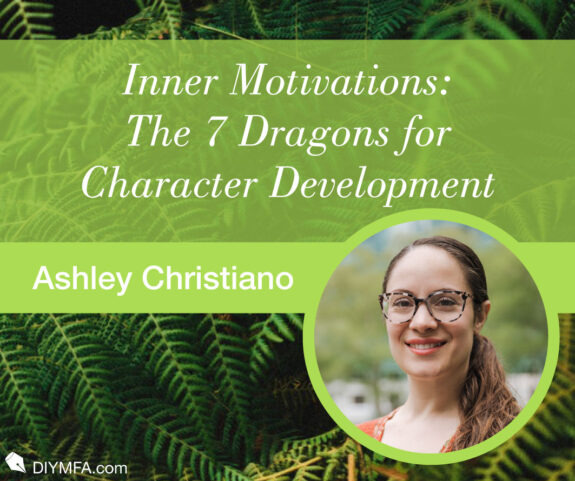You know that part of you that seems to roar to the surface and lead you to be your worst self? It might be from a series of small triggers that tumbleweed into a berserker rage over time, or one big conversation or event that sets you off. But regardless, you react out of instinct and almost lose sense of your true self in the process, overcome by your shadow side.
According to Jose Stevens in his book Transforming Your Dragons: Turning Personality Fear Patterns into Personal Power, that’s your dragon running rampant. The dragon is a part of ourselves that claws itself to life out of fear, a survival mechanism we each develop over time to protect ourselves from the things that scare us. But often, the things that scare us are also what help us to grow and transform into new, better, and braver people.
Learning what our dragons are and how we can work with them can give us incredible insights into our own motivations, challenges, and path to transformation.
And they can do the same for our characters, too.
What are the 7 Dragons?
Stevens describes the concept of a dragon as “an icon, a powerful image that represents danger and fear, and of course lies in wait on our path to roar out a terrible challenge to our progress.” They are a “transforming test” you’re faced with each day to grow into a better you.
Our fears have much to teach us. Only by understanding and confronting them can you accept and adapt to your own resistance to growth.
There are seven distinct dragons that within the framework, each manifests in different ways from subtle to debilitating. Here’s a quick look at each dragon and how it might manifest.
1. The Arrogance Dragon
This dragon reacts to your fears and insecurities by wanting to come off as bigger and stronger and smarter and more special than you actually feel beneath the surface.
2. The Self Deprecation Dragon
This dragon reacts to your fears and insecurities by convincing you to become smaller, to belittle yourself, and ensure others don’t expect too much from you so you’re never at risk of disappointing them.
3. The Greed Dragon
This dragon is afraid of scarcity, and triggers you to hoard and consume in an effort to make itself feel full or satiated. But the more it consumes, the more it, and you, fears there will never be enough.
4. The Self-Destruction Dragon
This dragon comes to life when you are afraid you aren’t worthy of abundance, and can lead you to self-sabotage in ways small and large, subtle and extreme.
5. The Impatience Dragon
This dragon preys on your fear that there is never enough time to do all the things we must and want to do, leading us to feel like we can never relax and that we’re a failure if we do.
6. The Martyrdom Dragon
This dragon preys on your fear that you aren’t deserving of your own time or the time and attention of others, so it leads you to go out of your way to sacrifice your own needs for the needs and desires of others.
7. The Stubborn Dragon
This dragon preys on your fear of change, and convinces you that change is never good and in fact means you’re giving your power away to others, thus change should always be resisted.
While each dragon has a negative manifestation, learning what your dragons are can help you tame them and turn them into fearsome allies.
As somebody with a mighty impatience dragon, I know to pay attention to my “time” triggers. I can either be afraid there will never be enough time and give up or stress out or mess things up in haste (or some combination of the three), or I can use my well-earned speed and efficiency to meet the goals most important to me instead. In the end, others see my efficiency as impressive. But when I look at impatience as a gift instead of letting it be a fear-based reaction, I gain more control of my own life, emotions, and time. And get more writing done more easily, to boot!
How Can I Use them in Writing?
Now that we know what the 7 Dragons are and have some ideas of how they manifest, let’s go through a few examples of how knowing your characters’ dragons might help bring them more to life.
Understanding Their Backstory
There’s a couple ways you could go about using the 7 Dragons for character backstory.
First, you may already have an idea of what their backstory is (i.e. their childhood, their relationship to their parents/siblings, where and how they grew up, the values passed down to them). If that’s the case, you can determine what dragons would have developed alongside your character during their childhood.
For example, if they grew up wealthy but their parents always told them they were lazy good-for-nothings, your character might have a strong Self-Destruction dragon, because they fear they aren’t deserving of the abundance they have and punish themselves as a result.
Second, you may already know what your character’s dragon is based on the list above, but their backstory is a bit shaky or undeveloped. You would ask yourself the reverse question. What might lead somebody to have this dragon or this fear?
For example, your character has a strong Self-Deprecation Dragon and is afraid of standing out and the expectations that come with it. Maybe they grew up in a big family that was always competing with each other. Your character discovered quickly that they weren’t the best at what their parents cared about, so learned to minimize their other accomplishments to avoid being noticed and disparaged. It was safer to fly under the radar then stand out and be mocked.
Writing Convincing Reactions
Have you ever read a book and the character just didn’t behave in a way that felt aligned with what you as the reader believed about them? Maybe this is feedback you’re getting from your critique group or sense is a challenge in your early drafts and outlines.
The 7 Dragons can help here, too! Instead of getting too caught up in the specifics of the situation and all the tiny details in your character sheet, take a step back and think about it from a simpler but also more profound perspective: if my character has the X Dragon, what are they afraid of? If they are afraid of Y, how would they react to Z?
Let’s look at an example.
We’ll say this is for a YA fantasy novel and your protagonist has just failed the test that allows them to cross the line from youth to adulthood. How might they react?
Well, if they have the Arrogance Dragon, they probably had told everybody they would not only pass the test, but be the absolute best at it and break some kind of record. In failing, their fear of unworthiness is magnified.
They may lash out at this public humiliation, causing harm to others in a way they will later regret, and then storm off dramatically. It will be their journey to heal the harm they’ve caused, and in the process regain a sense of healthy worthiness that they give themselves, instead of taking from others.
Setting the Direction of Your Character Arc
Lastly, the 7 Dragons can help determine what your character must learn throughout the course of the story. How can they transform their fear into growth and even achievement?
In a romance novel, your protagonist may be afflicted with a Martyrdom dragon. She’s always sacrificed her needs to make her partners/friends/family/boss happy, and ended up miserable and alone, a self-made victim. Her journey will be to learn how to assert herself and accept that her own needs and wants are equally as important as her partner’s. The going will be tough. She may have to practice drawing boundaries, admit that she has needs, and allow herself to actually enjoy life for once.
How can you put opportunities to understand and thus tame her dragon at each stage of her development? Some obstacles cause her to take a few steps back as her dragon slips its leash, but also let her see herself and her patterns more clearly. By the end she may not be fully healed, but at least she is happy and healing.
Let Your Dragons Fly
I hope you enjoyed learning about your own dragons and afflicting your characters with them! It’s a great way to understand who they are, how they might react when fear is triggered, and what that reaction sets up for the rest of your story.
Learning about your own dragon might help you get to the bottom of some of your own writing resistance, to boot!

Ashley Christiano is a fantasy writer, experienced tarot reader, and professional astrologer based in Los Angeles. As The Novel Mystic, she combines the power of astrology, tarot, and creative writing to empower women, educate the astro-curious, and inspire her own storytelling. You can find her on Twitter or her website to learn more or get your own reading.







